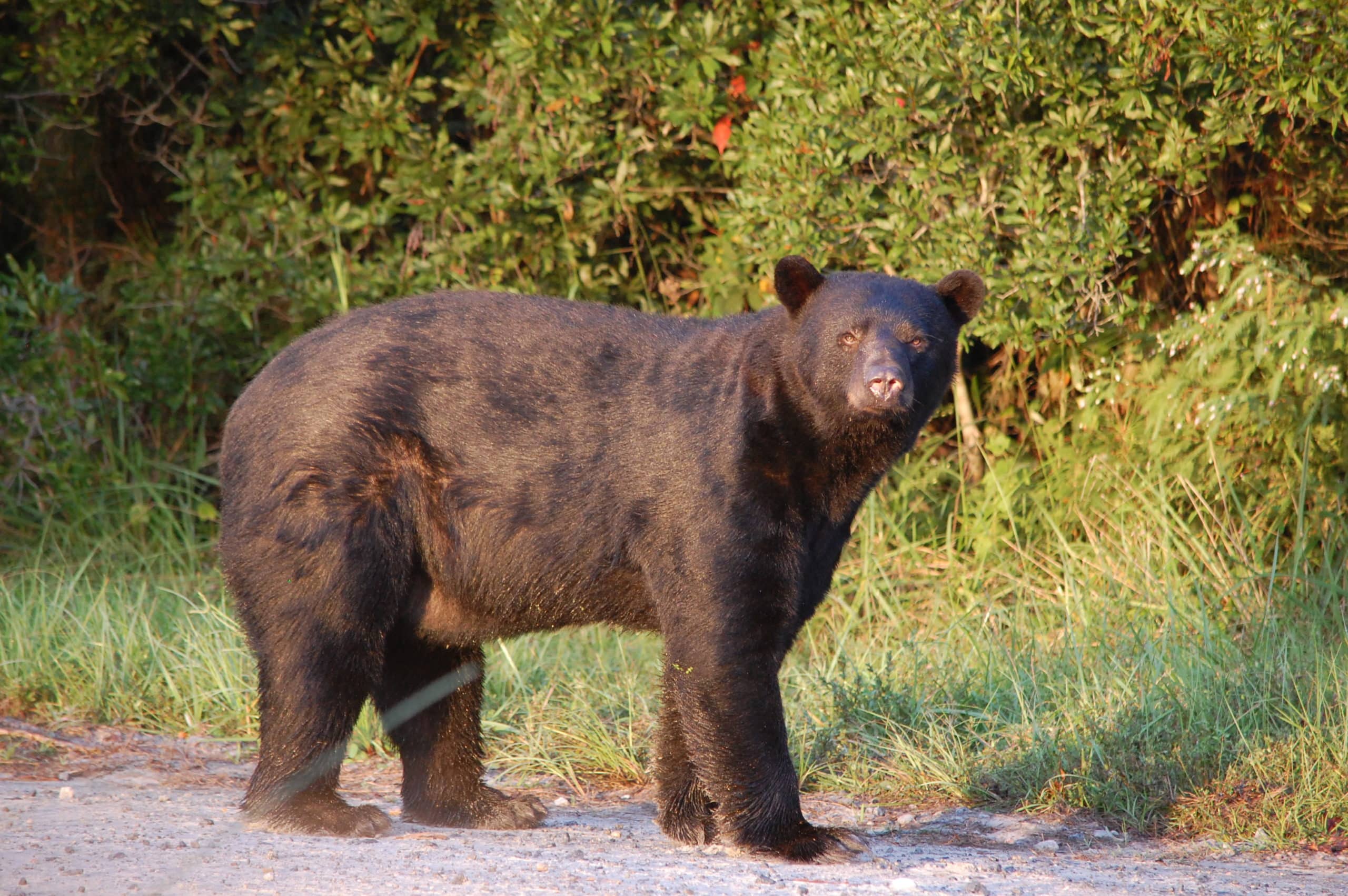Bears are no strangers to Northern Nevada and every year during the summer and fall months, bears are especially active as they prepare to hibernate. Considering they are more active during this time; they often cross roadways putting themselves and motorists at risk. As of mid-September, nineteen bears have been killed on Nevada highways since the beginning of the year, up from fourteen bears this time in 2021. In 2021, the total confirmed bear fatalities was 46, and Nevada Wildlife experts believe that this number is on pace to double this fall season.
Most recently, a bear was hit on Highway 395 near Gardnerville in Northwest Nevada. Officials say that the severe fire season this year isn’t helping, and forage is reduced during fires and this leaves bears and other wildlife no option but to enter Nevada communities and highways. Additionally, bears are active for up to 20 hours a day as they begin to bulk up for hibernation as they strive to eat 20,000 calories a day. To put this in context, 20,000 calories would be the equivalent of eating 10 whole pizzas and 80 donuts a day. This makes bear-vehicle collisions more apt to happen, since they are often out and about during the dark, low visibility hours, and are slower and more sluggish than they usual.
Safety Tips when Bears or other Wildlife are Present
Bears are more likely to be found on Highways near forests and foliage or on residential roads. Urban Wildlife Coordinator, Raquel Martinez, of the Nevada Department of wildlife works with NDOT to make Nevada roads safer for both bears and motorists. This includes studying reported wildlife car accidents in Nevada and adjusting highway designs. Martinez also notes the following steps Nevadans can take to reduce risks:
- Drive at the speed limit and pay close attention to the road. Use headlights when driving half an hour after sunset and half an hour before sunrise.
- Remove or secure items that might attract bears into residential properties. This will help reduce the number of bears entering urban areas and crossing roads to get there.
- Keep trash in bear resistant containers or keep them inside a locked shed, or in your garage. Waste Management as well as various county disposal offices offer resistant containers.
- Only leave trash outside in the morning it will get picked up, not the night before.
- Remove items such as bird feeders and pet food from your backyard. Additionally, if you have fruit trees or berry trees, pick the fruit.
- Keep your backyard clean and clean up after barbecue remains, food remains, etc.
- Install electric fencing around livestock, chicken coops, or beehives.
Following these simple tips can help reduce bears on the roads as well as minimize the risks of having bears in your home and destroying private property.
Other Tips While Driving Around Wildlife
In addition to bears, wildlife is no stranger to Nevada roads, and deer, wild horses, and other animals often share the road with motor vehicles. In the United States, an estimated one to two million accidents between motor vehicles and large animals, such as deer, occur. This has caused nearly 200 human deaths, 26,000 injuries and at least eight billion dollars in property damages [2]. It is important to be extra alert in signed wildlife areas and it is common to see yellow diamond shaped signs with the shape of the animal that commonly crosses traffic in the area. Additionally, remember that wildlife, especially those impacted by wildfires, often travel in large groups and if you see one crossing the road, there may be multiple about to cross nearby.
As always, distracted driving can put yourself at greater risk of collision with wildlife and it is important to be attentive and pay close attention to the road. If you are driving in a wildlife area at nights, you can look for an animal’s reflective eyes, which can often be spotted from a distance. Animals like deer have this quality. Additionally, when driving at night use your high beams to illuminate the road (unless there is fog or snow) and keep your dash lights on low so the glare on the inside of the windshield does not reduce visibility.
Motorcyclists should be extra cautious in wildlife areas as they are at particular risk. While only two percent of deer-car collisions resulted in human fatalities, eighty-five percent of deer-motorcycle collisions involved human fatalities. Once again, drive with caution especially when visibility is low, and reduce speed.
You cannot always anticipate wildlife and their actions when traveling across roadways can be unpredictable. However, understanding the above safety tips as well as understanding a little bit of wildlife behavior can keep you better equipped to travel on the road.
[1] https://www.recordcourier.com/news/2022/sep/19/bear-traffic-deaths-way-doubling-year/
[3] https://defenders.org/sites/default/files/publications/driver_tip_sheet.pdf


